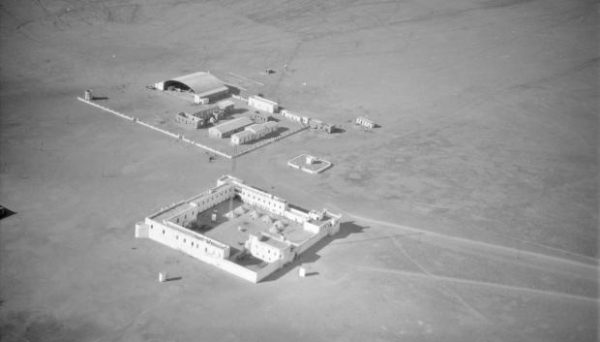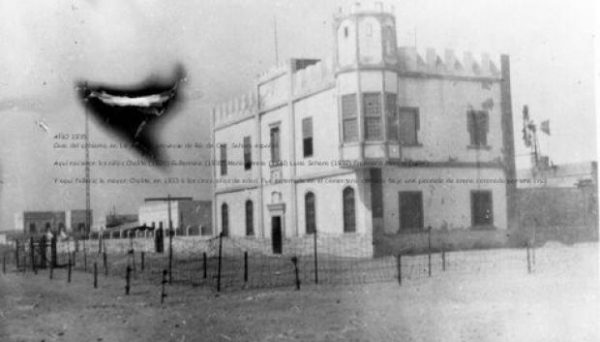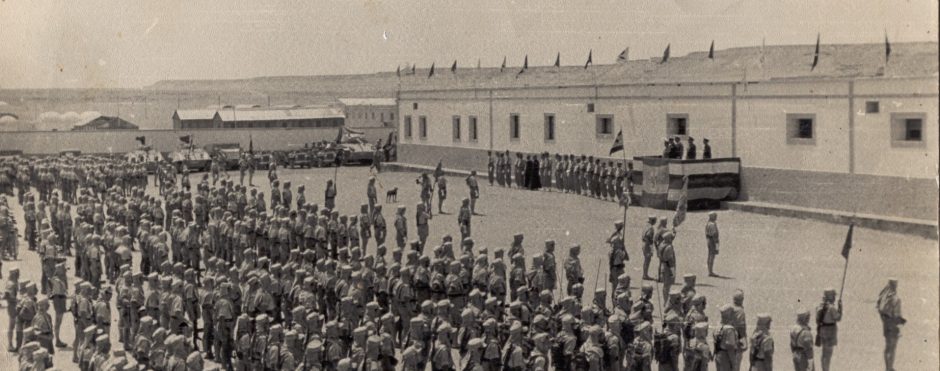Source:El Debate
During the period of Spanish rule, the Sahara was just a large sandy desert with a few military bases and a few ports to support fishing vessels.
Historical circumstances have changed so much that today the Western Sahara is seen as a territory full of economic possibilities and Morocco is aware of its potential benefits. Even in sectors that were unthinkable a century ago, such as solar energy production. But these benefits were not always so clear. During the period of Spanish rule, the Sahara was just a large sandy desert with a few military bases and a few ports to support fishing boats.
Spain explored the Sahara because it was unoccupied territory and because it justified its priority to do so on historical rights. The Canary Islanders, especially the Fernández de Lugo family, had already raided those lands as far as Cape Bojador, and Enrique IV, in 1468, appointed them lords of the Barbary Sea. In 1478, Diego García de Herrera founded a tower that would later be erroneously marked as Sidi Ifni, perhaps because of French interests in distancing Spain from Puerto Cansado, the true location of its location. Those adventures remained, like so many others, without continuity until the end of the 19th century.
In 1884 Bonelli Hernando arrived in Río de Oro, founding a small establishment in what would later become Villa Cisneros, where Bens would settle in 1904. A place of support for Canary Island fishing boats and where a factory of the Transatlantic Company would be established. In 1886, the expedition of Cervera, Rizzo and Quiroga reached the salt flats of Iyil, where economic activity could be carried out, and the oases of Adrar Tamar, a region where there was water and the possibility of founding a settlement. Despite Spanish protests, France took these places in the Treaty of Paris in 1900, joining them to Algeria’s Saharan territory. Spain was left without interesting natural resources to exploit.

Fort of Villa Cisneros in 1930
From then on, Spain’s possessions were of little use: fishing and a few military positions that could be used strategically in the event of an attack on the Canary Islands, which were always under threat. The Sahara was a kind of common territory for a few nomadic pastoralist peoples and caravan passages. In 1920, Bens occupied La Güera, at the southern tip of the Spanish Sahara. It was not until 1938 that the town of El Aaiún was founded, thanks to a military man, Antonio de Oro Pulido, with whom Major Galo Bullón, who had occupied Daora in 1934, collaborated. The only town that existed, founded by Ma el Ainin, was Smara, the centre of resistance against the Spanish. It was destroyed by the French to put an end to the rebellion that also affected their colonies and was not reoccupied until 1934 when Captain De la Gándara entered with his Meharis. Resistance to the Spanish presence, which was only tolerated at a few coastal points, was great and difficult to overcome. Little by little, military positions were created that were the embryo of the future cities where the nomads would settle definitively.
In the Sahara, the eternal question of Guinea was renewed. The colonies produced little and cost more and more because it was necessary to maintain an administrative and military structure, improve communications and invest in prestige policies such as improving health, education and the living conditions of the country’s natives. During Primo de Rivera’s dictatorship, attempts were made to change the colonial routine and boost the economy of Spanish Africa. In Guinea, with a substantial budget appropriation, improvements were evident and the entire territory was occupied. In the Sahara, the same thing was attempted, but the conditions were different: there was no place to develop plantations, timber industries or mines. There were only fishing ports and warehouses at Villa Cisneros, La Güera and, further north, at Cabo Juby (Tarfaya).

House of the Spanish governor of La Güera, circa 1935.
But attempts were made. In 1925, a commission headed by General Leopoldo Ruiz Trillo arrived in the territory to study the area and its possibilities. As a result, Colonel Bens was dismissed as a delegate of the high commissioner with the excuse that the post was to be that of lieutenant colonel. He had been in the desert for 25 years and knew it like nobody else. It is possible that the change of such a long-serving official in the same post is logical and beneficial, as long as he is replaced by someone who improves on what went before. This was not the case. Bens was loyal to the end, informing Ruiz Trillo of the situation and proposing some changes. The commission studied the territory, noting that the forts were in good condition, that protection for the commercial factories of the established companies was excessive and very costly, and that the airfields were in fair condition because they lacked buildings and fuel was still stored in drums. The balance was to appoint Lieutenant Colonel De La Peña as delegate and increase the number of troops.
In 1932, Colonel Múgica’s commission highlighted the fact that the colonial administration was full of irregularities. Indiscipline among the troops, lack of control over permits, insubordination and desertions by indigenous soldiers. And excessive expenditure on pacification policy, i.e. paying periodic sums to tribal chiefs to keep the peace without using force. The indigenous people had the impression that Spain had no authority in the Sahara, only presence. As a result, De la Peña was dismissed and replaced by a well-known Africanist: Navarro Cañizares.
And everything remained the same. It was not that the military officers who served as deputies to the High Commissioner or as governors were incompetent or negligent. The maladjustments of a long routine of inaction were insurmountable without means. The civil servant often becomes discouraged and unmotivated because he is faced with problems he cannot solve, usually due to a lack of personnel and budget. And the politician saves his position in the eyes of public opinion by dismissing the weakest. It has always been like this.
Until Alia Medina discovered the Bu Craa phosphates in 1947, which began to be exploited in the late 1960s, the Sahara had no economic possibilities. These phosphates took away Morocco’s near monopoly and Spain gave in.
Share this article
On This Day
- 1528 Prince Felipe is sworn as heir to the Spanish kingdoms in Madrid.
- 1593 The city of San Salvador de Jujuy (Argentina) is founded by Francisco Argañaraz y Murguía.
- 1776 Battle of Lexington and Concord (United States).
History of Spain
26 August 2020
27 January 2021
Communism: Now and Then
23 December 2022
28 July 2021






